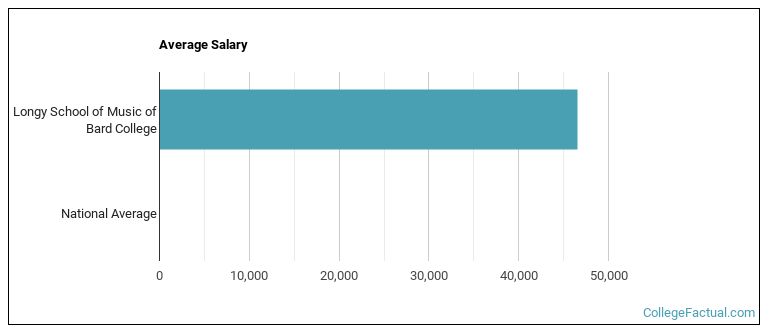 by our College Data Analytics Team
by our College Data Analytics TeamExplore the best ranked schools for the programs you are most interested in.
Longy was not ranked in College Factual's Best Overall Colleges report this year. This may be because not enough data was available.
See all of the rankings for Longy School of Music of Bard College.
Longy School of Music of Bard College has an acceptance rate of 89%, so it is easier to gain admission to this school than some others. Still, the admissions staff will examine your application closely to make sure you're a good fit for Longy.
The student to faculty ratio is often used to measure the number of teaching resources that a college or university offers its students. The national average for this metric is 15 to 1, but at Longy it is much better at 3 to 1. That's good news for students who want to interact more on a personal level with their teachers.
When estimating how much access students will have to their teachers, some people like to look at what percentage of faculty members are full time. This is because part-time teachers may not have as much time to spend on campus as their full-time counterparts.
The full-time faculty percentage at Longy School of Music of Bard College is 7%. This is lower than the national average of 47%.
Longy School of Music of Bard College has a freshmen retention rate of 73%. That's a good sign that full-time students like the school and their professors enough to want to stick around for another year. It's also a sign that the admissions team did a good job in choosing applicants who were a good fit for the school.
During the 2017-2018 academic year, there were 40 undergraduates at Longy with 39 being full-time and 1 being part-time.
The net price is calculated by adding tuition, room, board and other costs and subtracting financial aid.Note that the net price is typically less than the published for a school. For more information on the sticker price of Longy, see our tuition and fees and room and board pages.
While almost two-thirds of students nationwide take out loans to pay for college, the percentage may be quite different for the school you plan on attending. At Longy, approximately 27% of students took out student loans averaging $4,537 a year. That adds up to $18,148 over four years for those students.
Get more details about paying for Longy School of Music of Bard College.

See which majors at Longy School of Music of Bard College make the most money.
Get more details about the location of Longy School of Music of Bard College.

Contact details for Longy are given below.
| Contact Details | |
|---|---|
| Address: | 27 Garden Street, Cambridge, MA 02138 |
| Phone: | 617-876-0956 |
| Website: | longy.edu/ |
| Most Popular Majors | Bachelor’s Degrees | Average Salary of Graduates |
|---|---|---|
| Music | 25 | NA |
| Teacher Education Subject Specific | 24 | NA |
Online courses area a great option for busy, working students as well as for those who have scheduling conflicts and want to study on their own time. As time goes by, expect to see more and more online learning options become available.
In 2022-2023, 98 students took at least one online class at Longy School of Music of Bard College. This is an increase from the 59 students who took online classes the previous year.
| Year | Took at Least One Online Class | Took All Classes Online |
|---|---|---|
| 2022-2023 | 98 | 45 |
| 2021-2022 | 59 | 28 |
| 2020-2021 | 0 | 0 |
| 2018-2019 | 0 | 0 |
Learn more about online learning at Longy School of Music of Bard College.
Footnotes
*The racial-ethnic minorities count is calculated by taking the total number of students and subtracting white students, international students, and students whose race/ethnicity was unknown. This number is then divided by the total number of students at the school to obtain the racial-ethnic minorities percentage.
References
More about our data sources and methodologies.